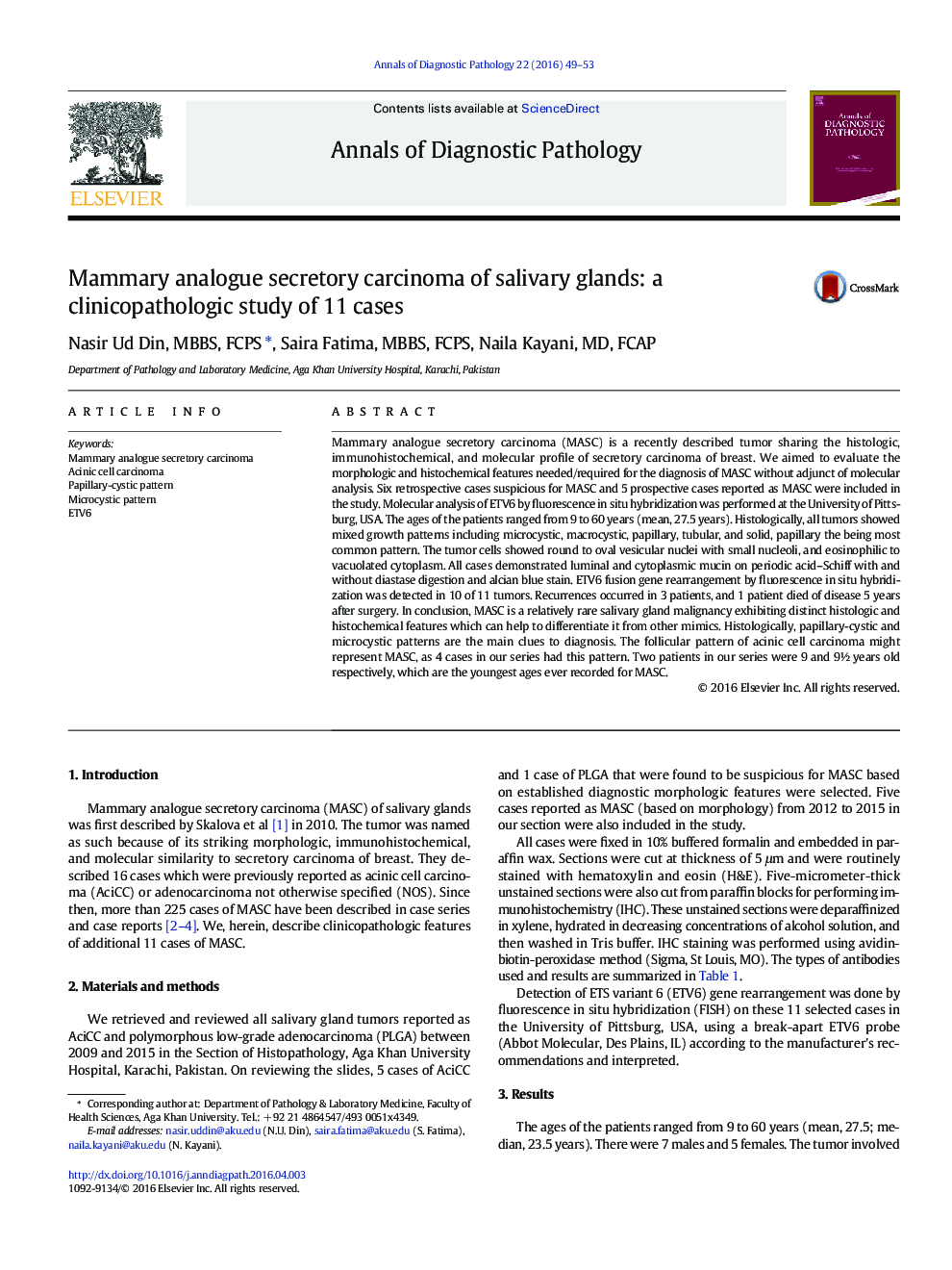| کد مقاله | کد نشریه | سال انتشار | مقاله انگلیسی | نسخه تمام متن |
|---|---|---|---|---|
| 4129722 | 1606473 | 2016 | 5 صفحه PDF | دانلود رایگان |
Mammary analogue secretory carcinoma (MASC) is a recently described tumor sharing the histologic, immunohistochemical, and molecular profile of secretory carcinoma of breast. We aimed to evaluate the morphologic and histochemical features needed/required for the diagnosis of MASC without adjunct of molecular analysis. Six retrospective cases suspicious for MASC and 5 prospective cases reported as MASC were included in the study. Molecular analysis of ETV6 by fluorescence in situ hybridization was performed at the University of Pittsburg, USA. The ages of the patients ranged from 9 to 60 years (mean, 27.5 years). Histologically, all tumors showed mixed growth patterns including microcystic, macrocystic, papillary, tubular, and solid, papillary the being most common pattern. The tumor cells showed round to oval vesicular nuclei with small nucleoli, and eosinophilic to vacuolated cytoplasm. All cases demonstrated luminal and cytoplasmic mucin on periodic acid–Schiff with and without diastase digestion and alcian blue stain. ETV6 fusion gene rearrangement by fluorescence in situ hybridization was detected in 10 of 11 tumors. Recurrences occurred in 3 patients, and 1 patient died of disease 5 years after surgery. In conclusion, MASC is a relatively rare salivary gland malignancy exhibiting distinct histologic and histochemical features which can help to differentiate it from other mimics. Histologically, papillary-cystic and microcystic patterns are the main clues to diagnosis. The follicular pattern of acinic cell carcinoma might represent MASC, as 4 cases in our series had this pattern. Two patients in our series were 9 and 9½ years old respectively, which are the youngest ages ever recorded for MASC.
Journal: Annals of Diagnostic Pathology - Volume 22, June 2016, Pages 49–53
